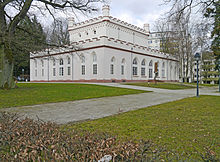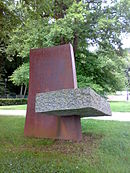
Hesse-Homburg was formed into a separate landgraviate in 1622 by the landgrave of Hesse-Darmstadt; it was to be ruled by his son, although it did not become independent of Hesse-Darmstadt until 1668. It was briefly divided into Hesse-Homburg and Hesse-Homburg-Bingenheim; but these parts were reunited in 1681.

Bad Homburg vor der Höhe is the district town of the Hochtaunuskreis, Hesse, on the southern slope of the Taunus mountains. Bad Homburg is part of the Frankfurt Rhein-Main urban area. The town's official name is Bad Homburg v.d.Höhe, which distinguishes it from other places named Homburg. The town has become best known for its mineral springs and spa, and for its casino.

Homberg is a small town in the northern part of Hesse, a state in central Germany, with about 15,000 inhabitants. It is the seat of the Schwalm-Eder district. In 2008, the town hosted the 48th Hessentag state festival.

Sankt Goar is a town on the west bank of the Middle Rhine in the Rhein-Hunsrück-Kreis (district) in Rhineland-Palatinate, Germany. It belongs to the Verbandsgemeinde Hunsrück-Mittelrhein, whose seat is in Emmelshausen.
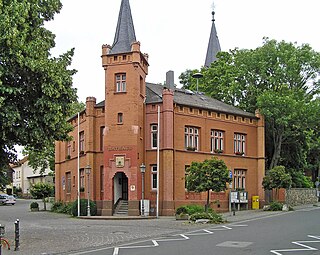
Wehrheim is a municipality in Hesse, Germany some 30 km (20 mi) north of Frankfurt am Main.

Frederick II of Hesse-Homburg, also known as the Prince of Homburg was Landgrave of Hesse-Homburg. He was also a successful and experienced general for the crowns of both Sweden and of Brandenburg, but is best remembered as the eponymous hero of Heinrich von Kleist's play Der Prinz von Homburg.
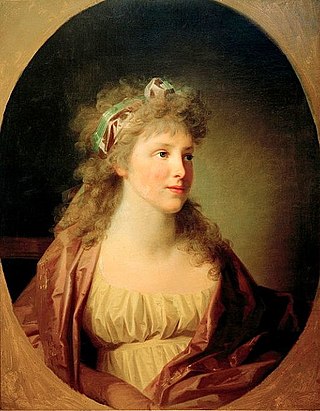
Princess and Landgravine Christiane Amalie of Hesse-Homburg, full German name: Christiane Amalie, Landgräfin von Hessen-Homburg was a member of the House of Hesse-Homburg and a Princess and Landgravine of Hesse-Homburg by birth. Through her marriage to Frederick, Hereditary Prince of Anhalt-Dessau, Amalie was also a member of the House of Ascania and Hereditary Princess of Anhalt-Dessau.
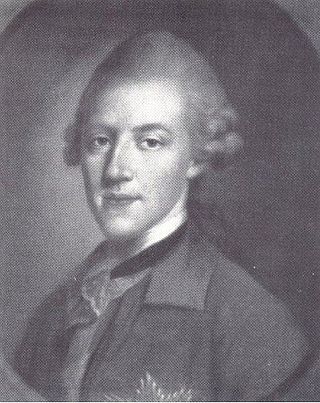
Frederick V Louis William Christian, Landgrave of Hesse-Homburg was from 1751 to his death landgrave of Hesse-Homburg.

Frederick III James of Hesse-Homburg was a Landgrave of Hesse-Homburg
Landgrave Philip III of Hesse-Butzbach was Landgrave of Hesse-Butzbach from 1609 to 1643.

Ulrike Louise of Solms-Braunfels was a German regent, Landgravine of Hesse-Homburg by marriage to Frederick IV of Hesse-Homburg, and regent of Hesse-Homburg, on behalf of her minor son Frederick V Louis William Christian from 1751 to 1766.
Casimir William of Hesse-Homburg was a prince of Hesse-Homburg.

Philip August Frederick was Landgrave of Hesse-Homburg from 19 January 1839 until his death. He was a field marshal in the imperial Austrian army.
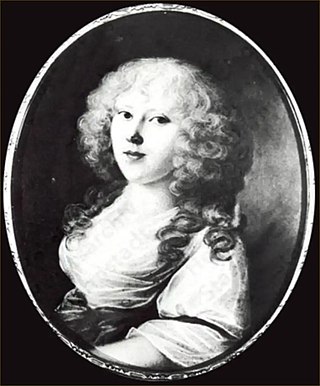
Landgravine Auguste Fredericka of Hesse-Homburg (full German name: Auguste Friederike, Landgräfin von Hessen-Homburg; 28 November 1776, Bad Homburg vor der Höhe, Landgraviate of Hesse-Homburg, Holy Roman Empire – 1 April 1871, Ludwigslust, Grand Duchy of Mecklenburg-Schwerin was a German noblewoman.

Bad Homburg Castle or Homburg Palace is a castle and palace in the German city of Bad Homburg vor der Höhe. Originally the residence of the Landgraves of Hesse-Homburg, it was first built in the 12th century.
Eduard Christian Trapp was a German physician, most notable as the founder of the spa baths in Homburg vor der Höhe, where he later died.

Ferdinand Heinrich Friedrich was a German nobleman and the last landgrave of Hesse-Homburg.

Leopold Victor Friedrich of Hesse-Homburg was a prince of Hesse-Homburg.
Friedrich Karl Kasimir von Creutz was a German poet, philosopher, writer and politician. He was born in Bad Homburg, where he also died, and was a councillor and ally of Frederick V, Landgrave of Hesse-Homburg.

